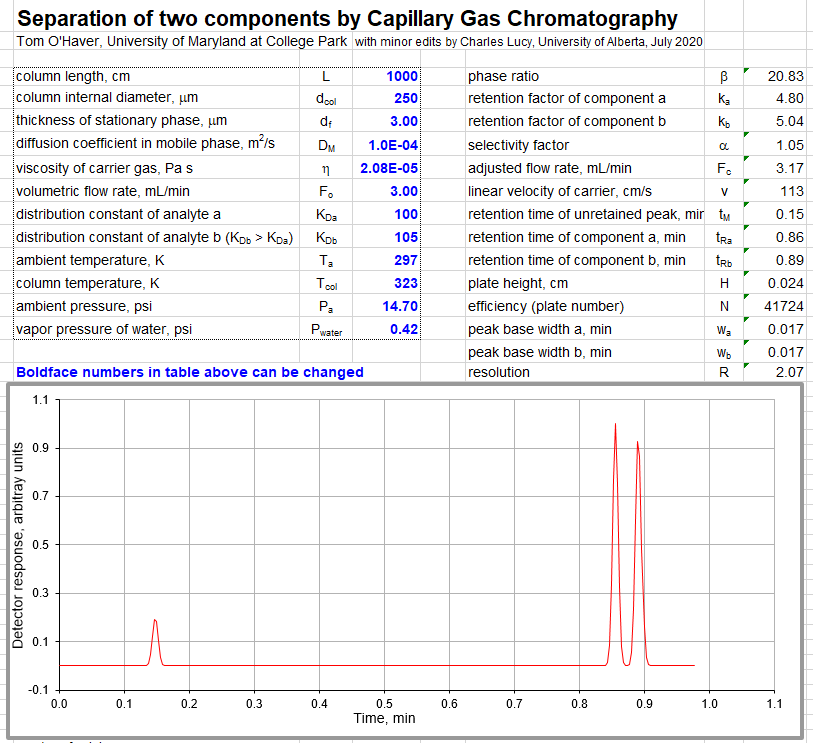


Resolution of Capillary Chromatography





Shows how a difference between the distribution coefficient of two components can lead to separation in capillary gas chromatography. Students select column length, column internal diameter, thickness of stationary phase, diffusion coefficient in mobile phase, viscosity of carrier gas, flow rate, ambient temperature, and column temperature. The simulation calculates the phase ratio, selectivity, linear velocity of carrier, retention time of unretained peak, retention time of the two components, plate height, efficiency (plate count), peak base width, and resolution. Displays plot of simulated chromatogram showing two component peaks and an unretained peak.
Excel format: Capillary.xls
(with improvements by Charles Lucy, University of Alberta, July
2020)
Inputs: column length, cm L column internal diameter, cm id thickness of stationary phase, cm df diffusion coefficient in mobile phase, cm2/min Dm viscosity of carrier gas, poise eta volumetric flow rate, mL/min Fo distribution coefficient of component a Kda distribution coefficient of component b Kdb ambient temperature, K Ta column temperature, K Tc ambient pressure, psi Pa vapor pressure of water, psi Pwater Outputs: phase ratio ß =i d/(4*df) ka = Kda/beta kb = Kdb/beta selectivity a = kb/ka adjusted flow rate, mL/min
Fc = Fo*(Tc/Ta)*(Pa-Pwater)/Pa linear velocity of carrier, cm/min
v = Fc/(3.14159*(id/2-df)^2) retention time of unretained peak, min to = L/v retention time of component a, min tra = (ka*to)+to retention time of component b, min trb =( kb*to)+to plate height, cm
h = (2*Dm)/v+((id/2)^2*((1+6*kb+11*kb*kb)/
(24*(1+kb)*(1+kb)))/Dm)*v efficiency (plate count) N = L/h peak base width a, min twa = tra/sqrt(N/16) peak base width b, min twb = trb/sqrt(N/16) resolution
R = sqrt(N)*((alpha-1)/alpha)*(kb/(1+kb))/4